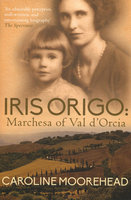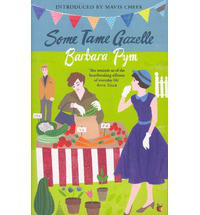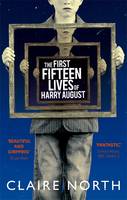Here’s a confession: I have only just read my first Thomas Hardy novel, which was “Far From the Madding Crowd”. I don’t often read the classics, but I have had an old copy of it on my shelves for years. It belonged to my parents. It’s an edition published by Macmillan in 1933 and is showing its age, the front cover having come apart from the book some time ago, but everything is still there.
I didn’t read about Thomas Hardy beforehand or even a synopsis of the novel. I just dived in and found it really enjoyable. There’s plenty of ‘lit.crit.’ out there, so I won’t try any criticism myself. If you have never read anything by this author before, be prepared for the West Country colloquialisms and some antiquated expressions and words you no longer come across. I didn’t try to look any words up that I wasn’t sure of as I feared it might spoil my enjoyment and there weren’t that many anyway. I just ‘took it steady’ at first. For those who want to know more about the language, “The Oxford Reader’s Companion to Hardy” edited by Norman Page seems to be a good source of information. This is out of print, but there is an ebook available.
As for the novel itself, a film tie in edition to coincide with the release of the 2015 film (the fourth time the book has been filmed) is available.
(Yet) More Travel Writing
In September 2013, I mentioned a book by Ben Zabulis called “Chartered Territory – an Engineer Abroad”. The book tells of the author’s experiences of living, working and travelling in Nigeria, Japan, Hong Kong, China and even Bhutan. The other week, Ben, who is incidentally a keen railway traveller, contacted me to say that this book is now available from the Oxfam book website. I had no idea that Oxfam sold books online, but if you want to buy a copy from Oxfam, the link is here.
Ben was a local resident in 2013, living in exotic (my word, not his) Kirkby-in-Ashfield, but has now decamped to somewhere 100 times more exotic: Hong Kong. For more about Ben, log on to the online cultural magazine “LeftLion”, which describes Ben as “Nottingham’s most travelled author”. I will look forward to reading more about Ben’s adventures in the far east via the electronic pages of LeftLion, which is also available in print format from certain venues in Nottingham.
More from “Jonathan Strange…”
I’m still reading “Jonathan Strange and Mr Norrell” by Susanna Clarke – it’s taking me a long time, partly because of the sheer length of the book (1000 pages in the TV tie in edition) and because I always have more than one book ‘on the go’ at a time. Throughout the book there are quite a few footnotes, some quite lengthy. Some are little stories in themselves, making the main narrative seem more authentic. Various parts of Nottinghamshire and Derbyshire as well as Newcastle, the centre of the territory of the Raven King, John Uskglass, are frequently mentioned, both in the main text and in the footnotes.
If you are reading or about to read this book, don’t neglect to read the footnotes as these are often fascinating and absorbing. In case you wondered, I am still enjoying the book.





















Have you ever posted a comment online? I’m thinking particularly about comments on articles on newspaper websites. If you have, have you wondered what happens afterwards? Well, for the Guardian website (as I’m sure for most other newspaper websites) there is a moderator whose job it is to check that the comments are on topic, weed out the trolls and so on. Inevitably the moderator comes across some very witty comments and downright weird ones from time to time. A selection of these has been brought together in a book called “I think I can see where you’re going wrong”, edited by Marc Burrows.
In his introduction, Marc Burrows points out that “much of this book is comprised of clever people making excellent jokes”. Here are one or two examples…
On the topic of ethical shopping: ‘What about ethical shoplifting, how’s that doing? Just because I’m too skint to afford food doesn’t mean I don’t have ethics you know’
Or, on pets: ‘As a husband, father of two daughters and servant of a cat, I have a dog to maintain some sense of ego and authority. It’s nice to be admired and adored’
Some might dismiss this as a ‘gift book’, but if anyone wants to give me a copy of this (the one I’ve been reading is a library book), I would certainly thank them. It’s an entertaining browse and something to reassure you that there is genuinely funny humour around.
Susan Hill’s crime hero
The detective in question is Simon Serailler, of Lafferton Police, a man well connected in the town and with a sister, Cat, a GP and doctor at the local hospice.
I’ve read two Serailler novels recently, but I’m not really a great crime fiction fan. The first, “The Shadows in the Street” (first published in 2010) is about the murder of two prostitutes and the disappearance of the Dean’s wife. Has she become just another murdered female or is this completely separate from the main story?
In the second, “The Betrayal of Trust”, Serailler is asked to solve a historic murder case practically single handed. Following a very heavy rainstorm, a landslip on the moors above Lafferton reveals the body of a girl who went missing 16 years ago. Shortly afterwards, another body of a female is found. Serailler has very little help in solving the murders due to cuts in expenditure. Hospices and assisted dying are two very prevalent themes in this story – Cat recommends to a student doctor that she might like to do some work at a new hospice where she discovers that all is not as it first appears and a woman who is diagnosed with a terminal illness investigates various ways in which to end her own life. How they all come together in the final chapters, you will have to find out by reading the book.
Not being a connoisseur of crime fiction, I can’t give an experienced opinion on these two, but in my humble opinion, they weren’t on a par with novels by Stephen Booth or Steven Dunne. Incidentally, Steven Dunne’s latest, “A Killing Moon”, (the 5th D.I. Damen Brook novel) is due out in mid-August.
Leave a Comment
Posted in Uncategorized | Tags: crime fiction, DI Damon Brook, DI Simon Serailler, humour, Lafferton, Marc Burrows, moderator, Stephen Booth, Steven Dunne, Susan Hill, The Guardian, website comments